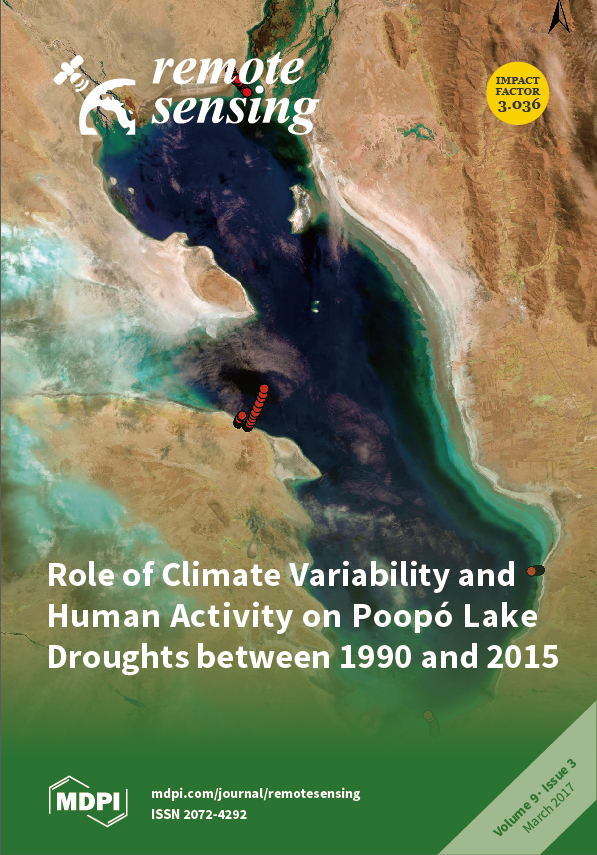Nitrogen is an essential nutrient in many terrestrial ecosystems because it affects vegetation’s primary production. Due to the variety of nitrogen-containing substances and the differences in their composition across species, statistical approaches are now dominant in remote sensing retrieval of leaf nitrogen content. Many studies remove spectral regions characterized by strong water absorptions before retrieving nitrogen content, because water is believed to mask the absorption features of nitrogen. The objectives of this study are to discuss the necessity of this practice and to explore how water absorption affects leaf nitrogen estimation. Spectral measurements and chemical analyses for Maize, Sawtooth Oak, and Sweetgum leaves were carried out in 2014. The leaf optical properties model PROSPECT5 was used to eliminate the influences of water on the measured reflectance spectra. The inversion accuracy of PROPECT5 for chlorophyll, carotenoid, water, and dry matter of Maize was also discussed. Measured, simulated, and water-removed spectra were used to: (1) find the optimal nitrogen-related spectral index; and (2) regress with the area-based leaf nitrogen concentration (LNC) using the partial least square regression technique (PLSR). Two types of spectral indices were selected in this study: Normalized Difference Spectral Index (NDSI) and Ratio Spectral Index (RSI). Additionally, first-order derivative forms of measured, simulated, and water-removed spectra were devised to search for the optimal spectral indices. Finally, species-specific optimal indices and cross-species optimal indices, as well as their root mean square errors (RMSE) and coefficients of determination (R
2), were obtained. The Ending Top Percentile (ETP), an indicator of the performance of cross-species optimal indices, was also calculated. PLSR was combined with leave-one-out cross validation (LOOCV) for each species. The predicted root mean square errors (RMSEP) and predicted R
2 were finally calculated. The results showed that chlorophyll, carotenoid, and water contents could be estimated with R
2 of 0.75, 0.59, and 0.69, respectively, which were acceptable for fresh leaves. The dry matter was retrieved with a relatively lower accuracy because of the fixed absorption coefficients adopted by PROSPECT5. The performances of species-specific optimal indices using water-free spectra were comparable to or worse than the corresponding indices derived with measured or simulated spectra. Compared with measured spectra, ETP did not change much after the effects of water were removed, and the R
2 between cross-species optimal spectral indices and area-based LNC for Sawtooth Oak and Sweetgum decreased while it remained almost the same for Maize, suggesting that the water-removed cross-species optimal indices were inferior to the corresponding optimal indices found without water removal. ETP was larger than 30% for all spectra, demonstrating the non-existence of common optimal NDSI or RSI for the three species. After water removal, the accuracy of PLSR for Sawtooth Oak and Sweetgum decreased and increased negligibly for Maize. The results suggest that water absorption has limited effects on reducing the accuracy of leaf nitrogen estimation. On the contrary, the accuracy may decrease due to the loss of spectral information caused by the removal of water-sensitive spectral regions.
Full article





